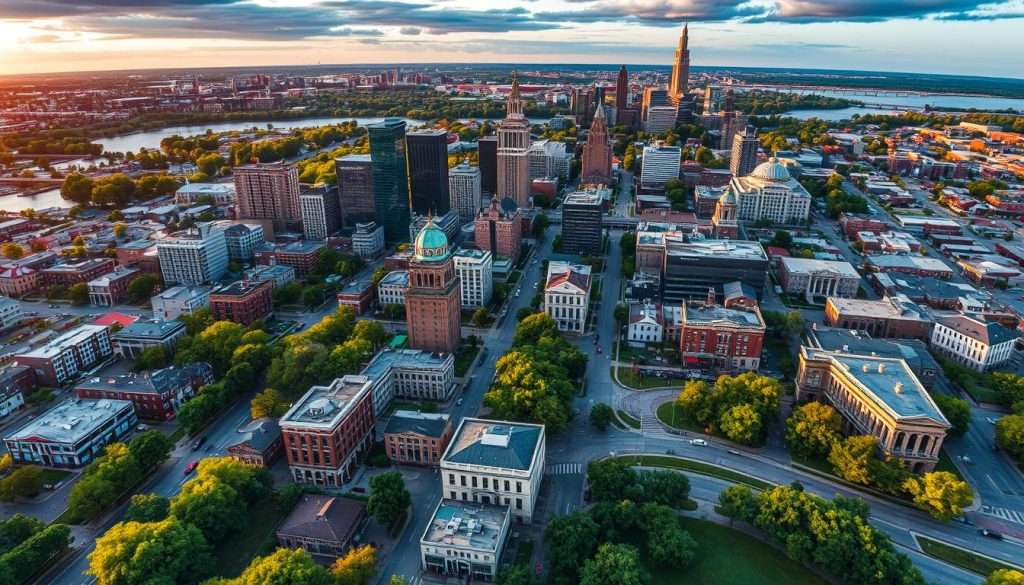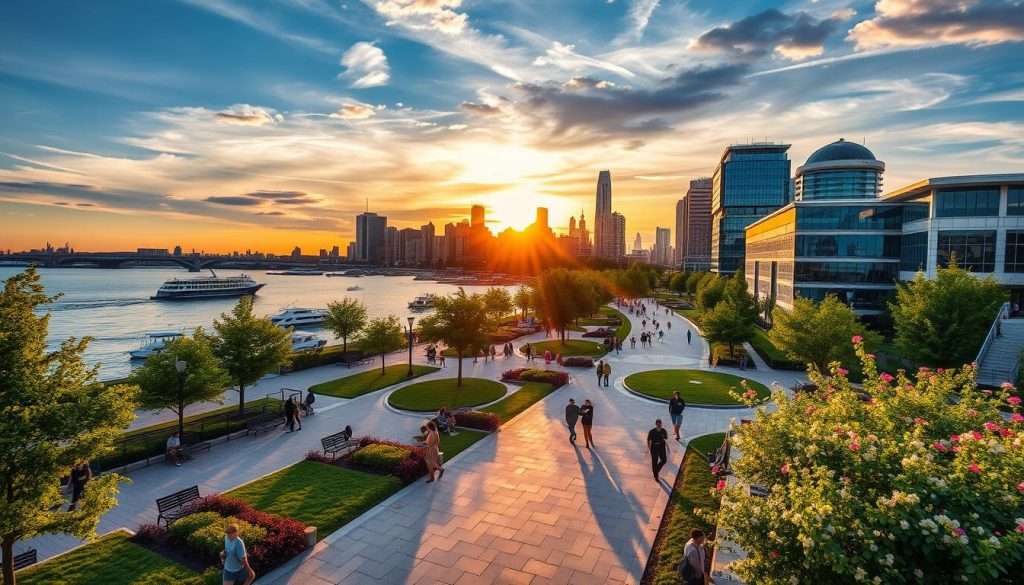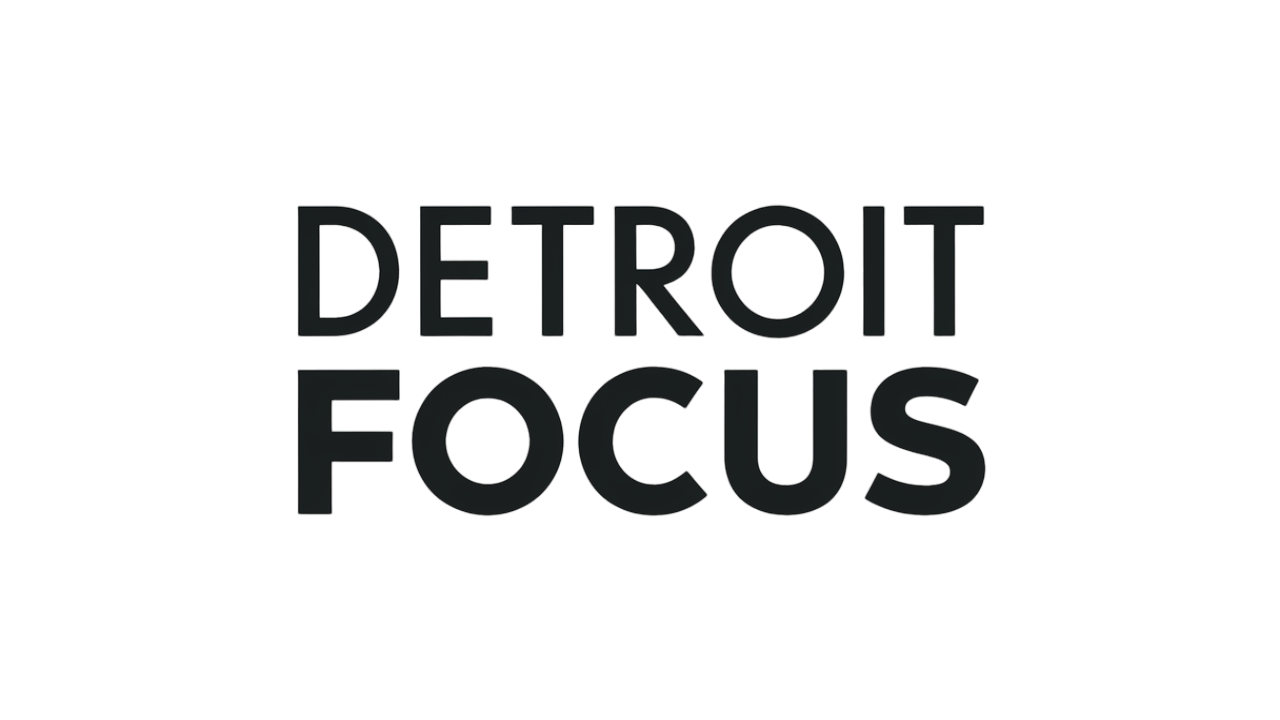When you ask where is Detroit, you start a journey through a city full of stories. Detroit, known as the Motor City, is a lively place where cars and culture meet. It sits by the Detroit River and Canada, making it a special spot for work and art.
This article will show you the amazing Detroit location and its rich history. You’ll learn about its unique neighborhoods and the energy of everyday life. Detroit is famous for Motown and techno music, showing its creative side. With a blend of history and new sights, Detroit is waiting for you to explore.
The Geographical Heart of Detroit
Detroit is a mix of history and geography. Knowing where Detroit is helps us see its importance in the U.S. It’s a key spot for trade and culture, thanks to its location near Canada.
Where Exactly Is Detroit Located?
Detroit is in southeastern Michigan. It sits on the Detroit River and near Lake St. Clair. This spot makes it a big player in regional commerce, especially with Canada.
For a better view of the area, check out a detailed Detroit map. It shows the city and its landmarks.
Neighboring Cities and Landmarks
Next to Detroit is Windsor, Ontario. You can easily go there via the Ambassador Bridge, built in 1929. Suburbs like Dearborn and Southfield add to the city’s diversity.
Places like the Renaissance Center and Belle Isle Park make the city’s skyline special. They offer fun for locals and visitors. Detroit welcomes about 16 million visitors every year.
Mapping Detroit’s Place in the U.S.
Detroit is a key spot in the U.S., linking the Midwest to Canada. It has a big urban area and a huge metro area. Over 4.3 million people live there.
It’s the 14th biggest metro area in the country. Detroit is important in many economic areas. You can fly into Detroit Metropolitan Airport or Coleman A. Young International Airport. To learn more, see this guide.
| Feature | Details |
|---|---|
| City Area | 142.89 sq mi (370.09 km²) |
| Urban Area | 1,284.8 sq mi (3,327.7 km²) |
| Metro Area | 3,888.4 sq mi (10,071 km²) |
| Population (2020) | 639,111 |
| Urban Population | 3,776,890 |
| Metro Population | 4,365,205 |
| GDP (MSA) | $305.412 billion (2022) |
| Population Density | 4,606.84/sq mi (1,778.71/km²) |
| Urban Density | 2,939.6/sq mi (1,135.0/km²) |
| Elevation | 581 feet above sea level |
Detroit’s Eastside vs. Westside
Detroit’s Eastside and Westside show two sides of the city. They have different cultures, buildings, and community feelings. Greektown and Corktown are key areas, each with its own story.
Key Districts of Detroit
Each side of Detroit has many lively districts. They make the city rich and colorful.
- Eastside Highlights: Downtown Detroit is busy with work and homes. It has famous buildings like the Renaissance Center. Greektown is close by, with great food.
- Westside Wonders: Bricktown Historic District mixes old and new. St. Andrew’s Hall is a highlight. Capitol Park Historic District shows the city’s past in beautiful buildings.
Cultural Hotspots: East vs. West
The Eastside loves Greek food and culture. It has festivals and events that bring people together. The Westside is all about art and music. Street art and galleries are everywhere, along with live music spots.
| Aspect | Eastside Highlights | Westside Highlights |
|---|---|---|
| Key Districts | Greektown, Downtown Detroit | Bricktown, Capitol Park Historic District |
| Cultural Focus | Greek heritage and cuisine | Artistic expression and live music |
| Community Vibe | Blue-collar, traditional | White-collar, modern |

Exploring Detroit’s Eastside and Westside shows the city’s diversity. For more on Detroit’s neighborhoods, check out Detroit neighborhoods and communities. Each area adds to Detroit’s story, making it special.
Detroit’s Vibrant Neighborhoods
Detroit’s neighborhoods show the city’s rich culture. History, community, and local scenes make the city lively. This keeps both locals and visitors happy.
Spotlight on Corktown
Corktown is Detroit’s oldest neighborhood. It’s full of history and charm. Now, it has cool bars and restaurants.
People can try food that mixes old traditions with new tastes. It’s a special place in Detroit.
The Allure of Greektown
Greektown is lively with its streets full of nightlife and Greek food. It’s a place where Greek culture comes alive. Visitors can find great food and shops.
This neighborhood shows Detroit’s love for different cultures. It’s a must-see for food lovers.
Exploring Midtown
Midtown is Detroit’s cultural heart. It’s where Wayne State University and the Detroit Institute of Arts are. The area is all about arts and learning.
It has galleries, theaters, and music venues. Midtown is where Detroit’s creativity shines. It’s a place that shows the city’s soul.
| Neighborhood | Unique Feature | Historical Significance |
|---|---|---|
| Corktown | Trendy bars and restaurants | Oldest neighborhood |
| Greektown | Nightlife and Greek cuisine | Greek cultural hub |
| Midtown | Cultural institutions | Home to Wayne State University |
| Eastern Market | Largest open-air market | Historic market space |
| Hamtramck | Culturally diverse community | Immigrant heritage |
The Riverfront: Detroit’s Scenic Backbone
The Detroit Riverfront is a beautiful urban area. It has lively parks and places for fun, great for both locals and visitors. The Detroit Riverwalk is a key spot for walking and biking, offering amazing views and cool breezes.
This path is over five miles long. It links people to important spots and parks, making the city feel like a green paradise.
Walking Along the Detroit Riverwalk
Walking on the Detroit Riverwalk is a must-do. It shows off stunning views of the water and local landmarks. People love walking here in the morning or at sunset, when it’s less busy.
Every corner offers beautiful sights. You can even see Hart Plaza, a famous spot, just a short walk away.
Parks and Recreation by the Water
Detroit’s riverfront has many parks for outdoor fun. There are bike lanes and paths for easy rides to scenic spots. Parks like Hart Plaza and Campus Martius Park have events and cool features.
Places like the MotorCities National Heritage Area and the Detroit Riverfront Conservancy attract many visitors. They show how lively and growing this area is.

How Detroit’s Location Influences Its Culture
Detroit’s unique geography and history have deeply shaped its culture. The city is known as the birthplace of Motown. This is thanks to its location, which brought together music from different communities.
Public events and local talent are everywhere. They invite the world to join in Detroit’s cultural events.
From Motown to Auto Industry Heritage
The legendary sound of Motown came from Detroit. Famous names like Stevie Wonder and The Supremes were born here. Berry Gordy Jr. started Motown Records with just $800 from his family.
Detroit’s history is also marked by the auto industry. It helped the city grow and innovate. This industry’s spirit is seen in Detroit’s music and culture.
Cultural Festivals and Events
Detroit’s calendar is full of cultural festivals. The Motor City Pride festival has been around since 1972. It draws over 40,000 people each year.
Hotter Than July! is a week-long celebration of Black LGBTQ pride. It attracts over 20,000 people. It shows the community’s strength and creativity.
Events like the Detroit Jazz Festival and Movement Electronic Music Festival make Detroit a cultural hotspot. They share the city’s music and art with the world. Each festival celebrates Detroit’s culture, promoting expression and inclusivity.
Getting to Detroit: Travel Tips and Directions
Planning a trip to Detroit? It’s easy to get around thanks to major airports and good transport. Detroit Metropolitan Wayne County Airport (DTW) is a big Delta hub. It has direct flights to places like Seattle and Osaka.
The airport is modern with six big runways. This makes arriving and leaving smooth. It’s a great start for any Detroit trip.
Major Airports Serving Detroit
After landing, you can get to downtown Detroit easily. The Detroit Air Xpress shuttle takes you downtown in 30-60 minutes for $6 if you book ahead. If you buy at the door, it’s $8.
Taxis cost between $45 to $50 for the same trip.
Navigating the City: Public Transport Options
Detroit public transport makes exploring the city easy. The SMART bus system connects the airport to downtown. The FAST Michigan #261 bus runs often during the week.
The QLine light rail tram in downtown is cheap. You can ride for $0.75 or get a three-hour ticket for $1.50. With these options, getting around Detroit is simple!
Road Trips to the Motor City
Detroit is easy to reach by car, thanks to highways like I-94 and I-96. Tourist Information Centers offer tips and attractions. So, get ready for an amazing stay in this lively city!
